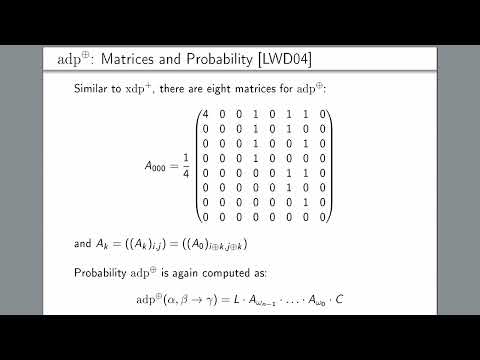CryptoDB
Maximums of the Additive Differential Probability of Exclusive-Or
| Authors: |
|
|---|---|
| Download: | |
| Abstract: | At FSE 2004, Lipmaa et al. studied the additive differential probability adp⊕(α,β → γ) of exclusive-or where differences α,β,γ ∈ Fn2 are expressed using addition modulo 2n. This probability is used in the analysis of symmetric-key primitives that combine XOR and modular addition, such as the increasingly popular Addition-Rotation-XOR (ARX) constructions. The focus of this paper is on maximal differentials, which are helpful when constructing differential trails. We provide the missing proof for Theorem 3 of the FSE 2004 paper, which states that maxα,βadp⊕(α,β → γ) = adp⊕(0,γ → γ) for all γ. Furthermore, we prove that there always exist either two or eight distinct pairs α,β such that adp⊕( α,β → γ) = adp⊕(0,γ → γ), and we obtain recurrence formulas for calculating adp⊕. To gain insight into the range of possible differential probabilities, we also study other properties such as the minimum value of adp⊕(0,γ → γ), and we find all γ that satisfy this minimum value. |
Video from TOSC 2021
BibTeX
@article{tosc-2021-31087,
title={Maximums of the Additive Differential Probability of Exclusive-Or},
journal={IACR Transactions on Symmetric Cryptology},
publisher={Ruhr-Universität Bochum},
volume={2021, Issue 2},
pages={292-313},
url={https://tosc.iacr.org/index.php/ToSC/article/view/8912},
doi={10.46586/tosc.v2021.i2.292-313},
author={Nicky Mouha and Nikolay Kolomeec and Danil Akhtiamov and Ivan Sutormin and Matvey Panferov and Kseniya Titova and Tatiana Bonich and Evgeniya Ishchukova and Natalia Tokareva and Bulat Zhantulikov},
year=2021
}

